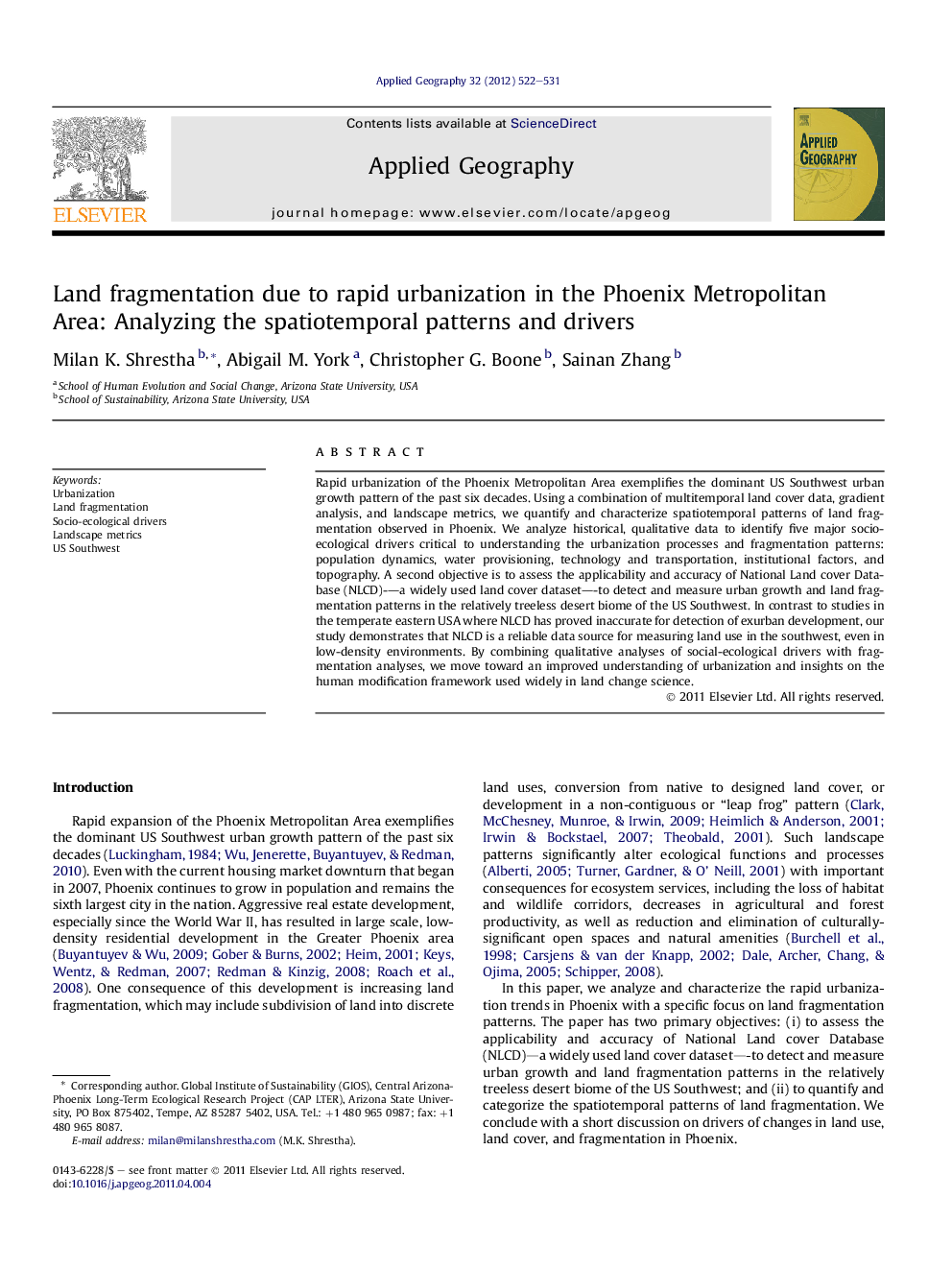| Article ID | Journal | Published Year | Pages | File Type |
|---|---|---|---|---|
| 83576 | Applied Geography | 2012 | 10 Pages |
Rapid urbanization of the Phoenix Metropolitan Area exemplifies the dominant US Southwest urban growth pattern of the past six decades. Using a combination of multitemporal land cover data, gradient analysis, and landscape metrics, we quantify and characterize spatiotemporal patterns of land fragmentation observed in Phoenix. We analyze historical, qualitative data to identify five major socio-ecological drivers critical to understanding the urbanization processes and fragmentation patterns: population dynamics, water provisioning, technology and transportation, institutional factors, and topography. A second objective is to assess the applicability and accuracy of National Land cover Database (NLCD)-—a widely used land cover dataset—-to detect and measure urban growth and land fragmentation patterns in the relatively treeless desert biome of the US Southwest. In contrast to studies in the temperate eastern USA where NLCD has proved inaccurate for detection of exurban development, our study demonstrates that NLCD is a reliable data source for measuring land use in the southwest, even in low-density environments. By combining qualitative analyses of social-ecological drivers with fragmentation analyses, we move toward an improved understanding of urbanization and insights on the human modification framework used widely in land change science.
► We quantify and characterize land fragmentation patterns observed in Phoenix. ► Urban growth has been more contiguous than “leap frog” in pattern. ► Fragmentation rates are highest in areas dominated by low-density land cover. ► NLCD is a reliable dataset to detect land change in the arid southwestern region.
